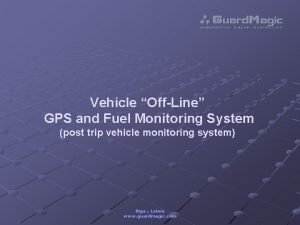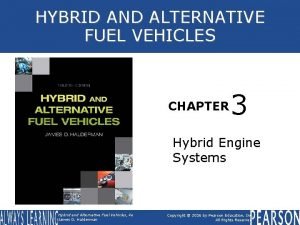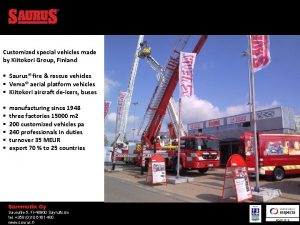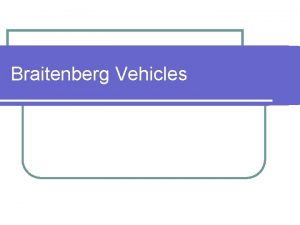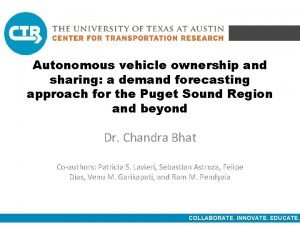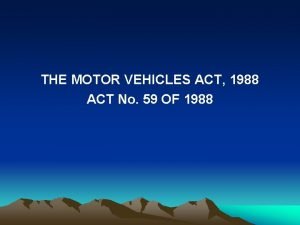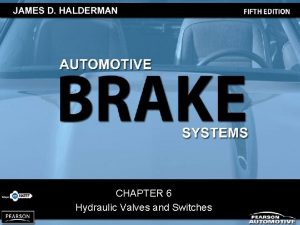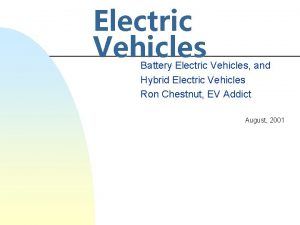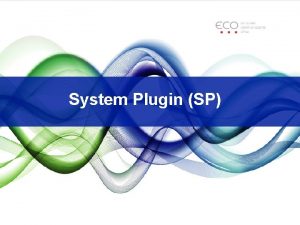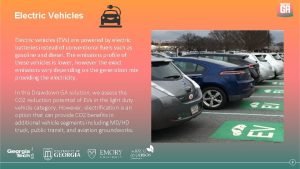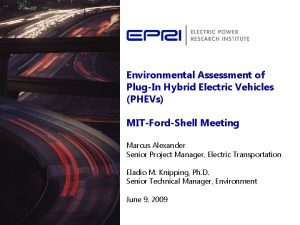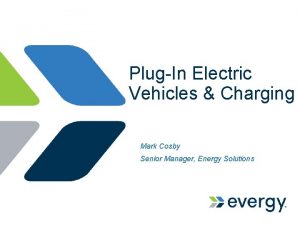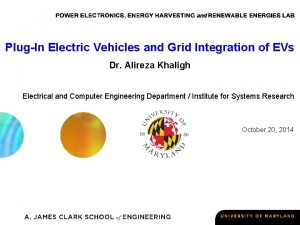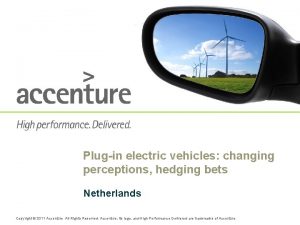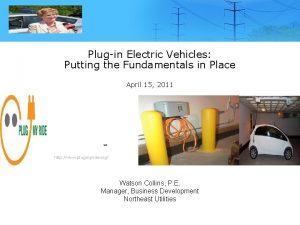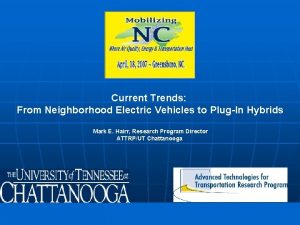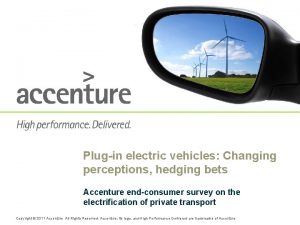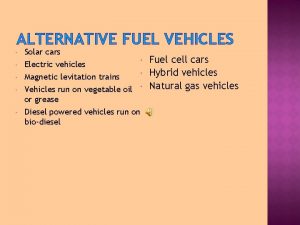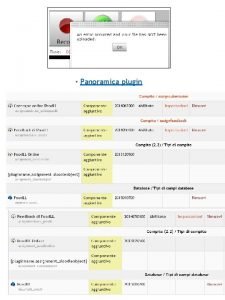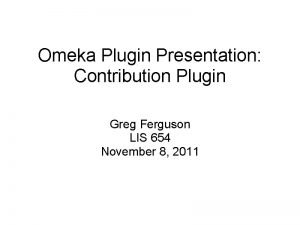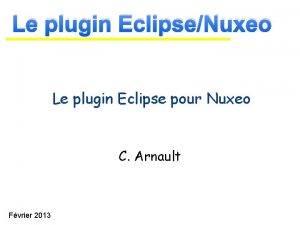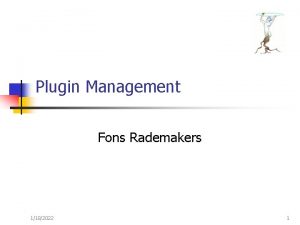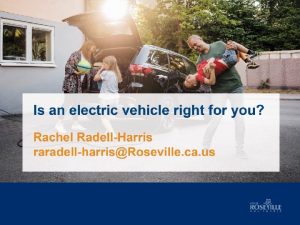IEEE IAS Atlanta Plugin Electric Vehicles History Technology

































- Slides: 33

IEEE IAS Atlanta Plug-in Electric Vehicles History, Technology and Rates Ben Echols

Southern Company • Southern Company (NYSE: SO), an investorowned energy company in the Southeast, owns 290 generating units at 77 power plants with a combined capacity of more than 43, 000 megawatts. – 57% Coal – 22% Oil & Natural Gas – 16% Nuclear (two units under construction) – 4% Hydroelectric – 1% Biomass Plant • Southern Company is one of the largest producers of electricity in the United States and is the largest wholesale power provider in the Southeast. • Four main Operating Companies o Georgia Power o Alabama Power o Gulf Power (Florida pan handle) o MS Power

A Little History In July 1901, the first electric automobile came to Atlanta. It was owned by Henry M. Atkinson, founder of the power company. He said he was also buying one for use by the Georgia Electric Light Company

A Little History

A Little History Meter Department Vehicles 1998 1910

A Little History • Georgia Power operated over 450 EV’s and logged over 7 million all electric miles 1996 – 2003.

A Little History • Georgia Power installed over 1000 chargers in 300 locations from 1995 – 2002 • Of those 300 locations 50 were public installations with over 200 chargers installed • Of the 50 public charger installations 15 were at malls or shopping centers

Why “Electric” Transportation? • • • It’s clean It’s energy efficient It’s cost effective It’s made in the USA It holds future energy sales opportunities

Why “Electric” Transportation? IT’S CLEAN AND GETTING CLEANER • Electric vs gasoline and diesel – Lower emissions and more efficient – EVs have 40% - 65% lower GHG emissions • SO investing billions of dollars to lower emissions – Environmental controls on existing coal units – Adding cleaner sources to our diverse supply of generation • New nuclear • Clean coal • Carbon capture and sequestration • Renewables

Why “Electric” Transportation? IT’S ENERGY EFFICIENT 1 Gallon of Gasoline 1 Li-Ion BEV Battery • • • 36 k. Wh of Energy 6 lbs 19. 7 lbs of CO 2 30 miles/range per gallon 90 miles total range (3 gallons) 36 k. Wh of Energy 600 lbs 1. 5 lbs of CO 2 per k. Wh 400 Watt-hours per mile 90 miles total range per charge – 59. 1 lbs of CO 2 – 54 lbs of CO 2 – 108 k. Wh total energy – 36 k. Wh total energy used – $3. 60 for 36 k. Wh Battery Electric Vehicle uses 1/3 Energy of comparable Gasoline vehicle. – $10. 50 for 3 gallons

Why “Electric” Transportation? IT’S MADE IN THE USA • $1 billion/day spent on foreign oil Energy independen

What’s different this time? Battery Requirement for EV Battery Pack Weight (kg) 600 500 400 300 EVs Now 200 100 0 0 10 20 30 Battery Energy (k. Wh) EVs of 1990 s 40 50 60

Battery Technology Advances • 100, 000 -mile/8 -year auto manufacturer warranty • Lithium-ion technology • 100 -plus-mile range • Second-life use

Variety of Vehicles to Consider Nissan Leaf Coda Tesla Model S Chevy Volt Fisker Karma

Variety of Vehicles to Consider Ford Focus Tesla Roadster Toyota Prius Mitsubishi i. Mi. EV

Commercial Vehicles too!

PEV Market Arrives! • Variety – something for everyone • 20 models expected by end of 2012 • Technology improvements • • Advanced battery technology 120/240 -volt capability Fast charging options Decreasing costs

Residential Charging • We believe that most charging (80% or more) will occur at home – Two types of charging • Level 1: 120 Volt – Doesn’t typically require changes to wiring or upgrades – GPC does recommend that a dedicated circuit is used – Depending on type of vehicle / miles driven, can be a long charging time • Level 2: 240 Volt – Requires the purchase on Electric Vehicle Supply Equipment – Permit and inspection may be required – GPC recommends hiring a certified electrician • Customers who live in condo associations should talk with their Home Owners Association about the feasibility of

Other Charging • Workplace and retail – Up to these businesses to decide if they want to install charging and if they will provide this as an incentive or charge a fee • Fast Charging (DC) – Anticipate that this will be installed at the rate of vehicle sales – GPC is working on developing a fast charging plug standard for the United States

What is GPC doing to support PEV’s? • Making sure the grid is ready to support new vehicle market • Developing new rates to encourage off-peak carging • Helping develop new industry standards for vehicle charging • Researching what’s ahead

Grid Impact Study 2% PHEV penetration # of PHEVs = 126 8% PHEV penetration # of PHEVs = 504

Grid Impact Conclusion • No impacts expected in the near term (2 -5 year) planning time frame due to 30% of nameplate base transformer loading • Impacts may eventually occur forecasting periods with higher levels of expected PEV penetration • Future Impacts will mostly likely first appear on assets – Closet to the customer – Low nameplate ratings

PEV Rate Options • Residential customers only • Single rate for the entire household – The car will not be metered separately • Easy, no additional metering costs • Simple for the customer • Encourages beneficial loadshapes

Rate Structure Summer (June 1 st – September 30 th) 12: 00 Midnight 7: 00 AM 2: 00 PM 7: 00 PM Monday Off Peak Tuesday 7: 00 AM- 2: 00 PM On Peak 5. 8295¢ per k. Wh 2: 00 PM- 7: 00 PM Wednesday Thursday Friday Saturday Sunday Super Off Peak 11: 00 PM- 7: 00 AM 11: 00 PM 12: 00 Midnight Off Peak 19. 2948¢ per k. Wh 1. 2500¢ per k. Wh Off Peak: 7: 00 AM- 11: 00 PM 5. 8295¢ per k. Wh 7: 00 PM- 11: 00 PM 5. 8295¢ per k. Wh Super Off Peak 11: 00 PM 7: 00 AM 1. 2500¢ per k. Wh

Rate Structure Winter (October 1 st – May 31 st) 12: 00 Midnight 7: 00 AM 2: 00 PM 7: 00 PM 11: 00 PM 12: 00 Midnight Monday Tuesday Wednesday Thursday Friday Saturday Sunday Super Off Peak 11: 00 PM- 7: 00 AM 1. 2500¢ per k. Wh Off Peak 7: 00 AM – 11: 00 PM 5. 8295¢ per k. Wh Super Off Peak 11: 00 PM 7: 00 AM 1. 2500¢ per k. Wh Off Peak: 7: 00 AM- 11: 00 PM *Price. 03

Rate Structure

Rate Summary • Customers have the ability to save money over R and TOU-REO if the charging of the vehicle is moved to 11 PM • Customers can charge through the peak time periods, but will pay more for doing so

DC Fast Charging Standard Development

What’s ahead? FUTURE ENERGY OPPORTUNITIES • Long-term promise of energy storage EHICLE TO HOME

What’s ahead? FUTURE ENERGY OPPORTUNITIES • Long-term promise of energy storage VEHICLE TO GRID

Visit our website www. georgiapower. com/electricvehicles National Plug-in Vehicle Initiative Website: http: //www. goelectricdrive. com

Questions? • National Plug-in Vehicle Initiative Website: http: //www. goelectricdrive. com/

Thank You!
 Submitted by and submitted to example
Submitted by and submitted to example Advancing technology for humanity
Advancing technology for humanity Advancing technology for humanity
Advancing technology for humanity Electric potential energy work formula
Electric potential energy work formula Potential of conductor
Potential of conductor Potential energy of an electric field
Potential energy of an electric field Electric potential from electric field
Electric potential from electric field A suitable electric pump in an electric circuit is a
A suitable electric pump in an electric circuit is a Chapter 21 electric charge and electric field
Chapter 21 electric charge and electric field Chapter 21 electric charge and electric field
Chapter 21 electric charge and electric field K constant unit
K constant unit Chapter 21 electric charge and electric field
Chapter 21 electric charge and electric field Electric charges and electric forces lesson outline
Electric charges and electric forces lesson outline Ue4 wheeled vehicle
Ue4 wheeled vehicle Gps fuel monitoring system
Gps fuel monitoring system Throat paints are ………. liquid preparations
Throat paints are ………. liquid preparations Use of momentum and impulse as safety equipment in vehicles
Use of momentum and impulse as safety equipment in vehicles Trade oriented sales promotion
Trade oriented sales promotion Hybrid and alternative fuel vehicles
Hybrid and alternative fuel vehicles Registration system for federal motor vehicles
Registration system for federal motor vehicles Kiitokori special vehicles
Kiitokori special vehicles Plugins and delivery vehicles in multimedia
Plugins and delivery vehicles in multimedia Valentino braitenberg vehicles
Valentino braitenberg vehicles Semi solid vehicles
Semi solid vehicles All obd ii vehicles use what type of read-only memory?
All obd ii vehicles use what type of read-only memory? Gso ro
Gso ro Forecasting demand for autonomous vehicles
Forecasting demand for autonomous vehicles Motor vehicles act 1988
Motor vehicles act 1988 Google driverless car seminar ppt
Google driverless car seminar ppt Future combat systems manned ground vehicles
Future combat systems manned ground vehicles A brake system metering valve:
A brake system metering valve: Nj road test requirements
Nj road test requirements Braitenberg vehicles simulation
Braitenberg vehicles simulation Preposition of vehicles
Preposition of vehicles














